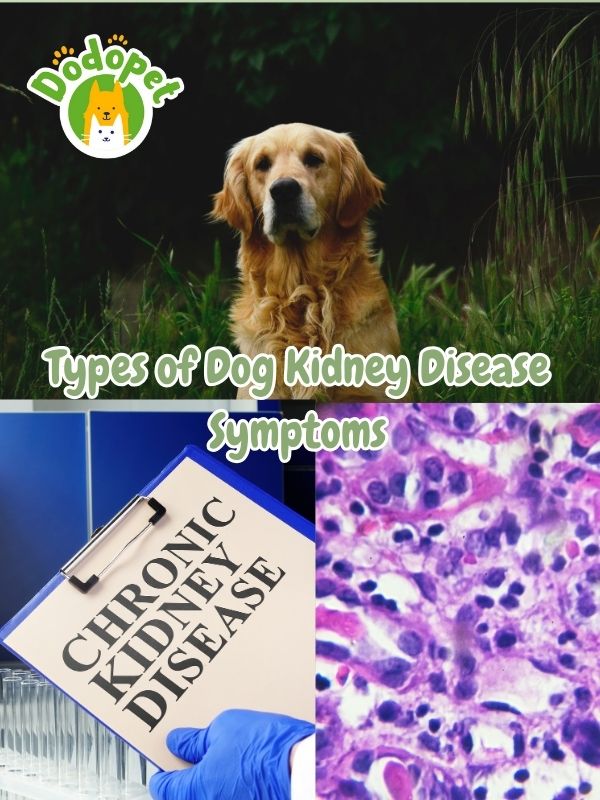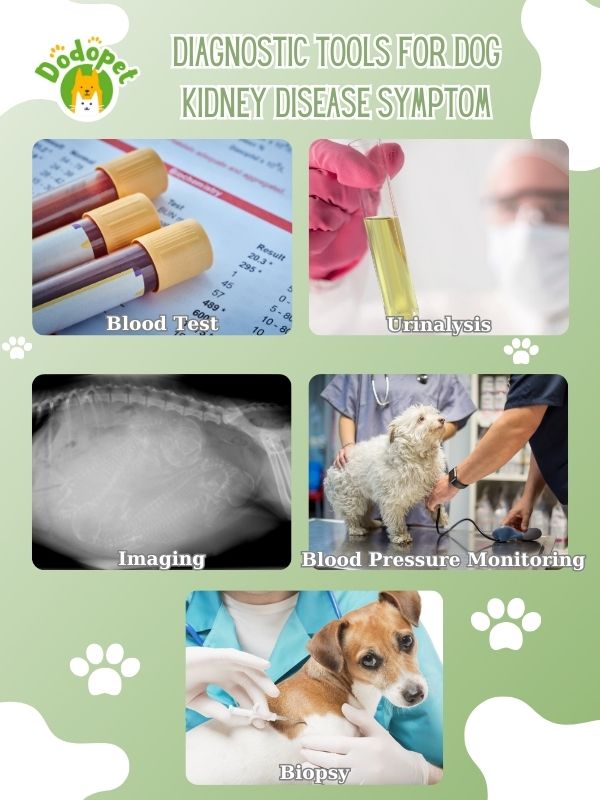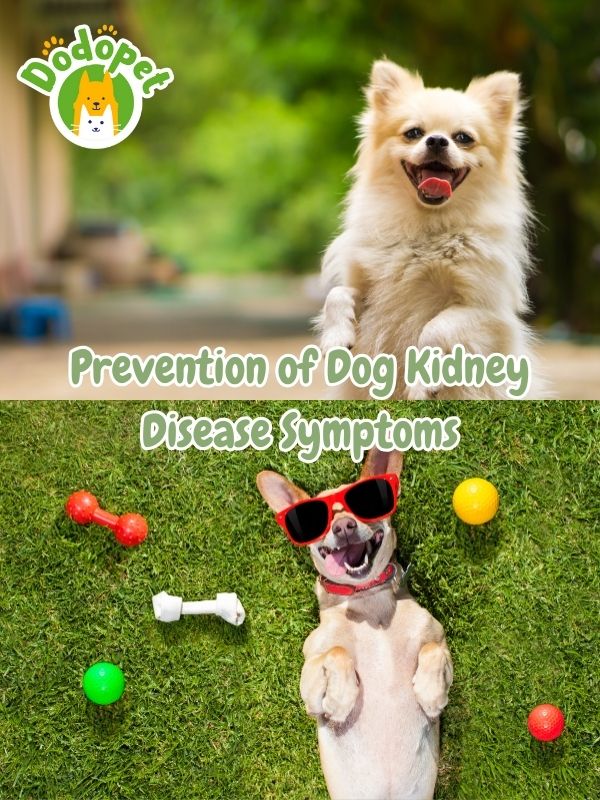When we think of health issues in dogs, we often associate them with the aging process. However, dog kidney disease symptoms are stark reminder that health problems can affect our furry friends at any age.This article aims to shed light on canine kidney disease, emphasizing that it’s not limited to older dogs and can affect pets of various ages.
Introduction to Dog Kidney Disease: Not Just an Older Dog’s Problem
In this section, you will hava overall vision about Dog Kidney Disease Symptoms, how important the dog kidney is and

Introduction to Dog Kidney Disease_ Not Just an Older Dog’s Problem
Vital Roles of Dog Kidney and Dog Kidney Diseases Symptoms are not limited to older dogs
The kidneys are remarkable organs in a dog’s body, responsible for a multitude of essential functions that help maintain their overall health. These vital organs filter waste products, regulate fluid and electrolyte balance, and play a role in blood pressure control. However, just like any other part of a dog’s anatomy, the kidneys can be susceptible to diseases that can compromise their function. In this article, we will delve into the world of dog kidney diseases, shedding light on the various conditions that can affect these critical organs and emphasizing that they can strike dogs of all ages, not just older ones.
Kidney diseases in dogs encompass a range of conditions, from acute, sudden-onset issues to chronic, long-term problems. While kidney disease is often associated with aging dogs, it’s important to understand that it can manifest at any stage of a dog’s life, making it a concern for pet owners regardless of their furry companion’s age.
What should dog owners know about Dog Kidney Disease Symptoms?
To fully comprehend the impact of kidney diseases on dogs, it’s essential to explore the distinct types of kidney disorders, their causes, symptoms, and the importance of early detection and treatment. Additionally, we’ll discuss preventive measures and how diligent care can significantly improve a dog’s quality of life when dealing with kidney issues.
From the subtle indicators that might suggest an impending kidney issue to the precise diagnostic methods employed by veterinarians for an accurate diagnosis, as well as the diverse range of treatment options at our disposal, this article aims to offer a thorough and encompassing exploration of dog kidney diseases. By gaining a deep understanding of the complexities associated with these conditions and acknowledging that they can impact dogs of all age groups, we equip ourselves as responsible pet owners to adopt a vigilant, proactive, and compassionate approach in caring for our cherished canine companions, ensuring that they receive the utmost care and support in the challenging realm of kidney disease.
Understanding the Function of Dog’s Kidneys
The kidneys in dogs perform critical functions which are vital for a dog’s overall health and well-being, and any dysfunction of the kidneys can lead to significant health issues. The vital functions of dog kidney to a dog’s health and well-being will be listed below
- Blood Filtration: The kidneys’ primary function is to filter waste products and excess chemicals from the bloodstream, including metabolic waste like urea and creatinine, as well as toxins.
- Fluid Balance: They also play a role in regulating fluid balance, adjusting urine production to maintain proper hydration levels. Dehydration leads to concentrated urine.
- Electrolyte Balance: Kidneys maintain the balance of electrolytes in the blood (e.g., sodium, potassium, calcium, and phosphate), crucial for nerve and muscle function.
- Acid-Base Balance: They contribute to regulating the body’s pH, expelling hydrogen ions and reabsorbing bicarbonate ions to keep blood pH in check.
- Blood Pressure Control: The kidneys produce renin, a hormone that helps regulate blood pressure by influencing blood vessel constriction and fluid balance.
- Red Blood Cell Production: Erythropoietin, another kidney-produced hormone, stimulates the bone marrow to produce red blood cells, vital for oxygen transport.
- Waste Product Excretion: In addition to filtering waste from the bloodstream, the kidneys eliminate these waste products via urine, preventing harmful substance buildup in the body.

Understanding the Function of Dog’s Kidneys
Red Flags: The Top 10 Dog Kidney Disease Symptoms
The kidneys of a dog are crucial organs that filter waste, maintain fluid balance, and regulate essential biological activities. When these busy organs begin to fail, the symptoms may not always be obvious. This article presents the top ten symptoms that potentially indicate kidney illness in their dog friends to assist dog owners in recognizing potential difficulties early.
- Increased Thirst and Urination: Dogs with kidney disease usually drink more water and urinate more frequently. One of the first indicators of kidney issues is a change in water consumption and urination patterns.
- Appetite Loss: A common symptom is a loss in appetite or refusal to eat at all. Dogs’ enthusiasm in their favorite foods or rewards could decrease.
- Weight Loss: Unusual weight loss can occur when the kidneys fight to eliminate waste from the body while also maintaining sufficient nutrition.
- Vomiting and Diarrhea: Gastrointestinal disorders such as vomiting and diarrhea may arise as toxins accumulate in the bloodstream as a result of impaired kidney function.
- Weakness and lethargy: Dogs suffering from kidney disease may appear lethargic, missing their usual energy and vitality. Weakness and trouble moving are also noticeable.
- Changes in Coat Quality: A dull, untidy coat or heavy shedding can indicate underlying health issues, such as kidney difficulties.
- Bad Breath (Ammonia-like Odor): Kidney disease can cause an ammonia-like smell on a dog’s breath, which is commonly described as foul-smelling or strange.
- Swollen Abdomen: In severe situations, dogs’ abdomens may swell due to fluid retention, a disease known as ascites.
- Behavioral Changes: Some dogs with dog kidney disease symptoms may exhibit behavioral changes such as irritability or disorientation.
- Decreased Urination: In contrast to the previous increased urination, dogs may urinate less frequently or pass less urine as the condition advances.

Red Flags – The Top 10 Dog Kidney Disease Symptomsshould you choose the right pet bed for your fluffy friends

Red Flags – The Top 10 Dog Kidney Disease Symptomsshould you choose the right pet bed for your fluffy friends
Types of Dog Kidney Disease Symptoms
Canine kidney disease encompasses various types, each with its unique characteristics and underlying causes. Here are some specific details about the common types of canine kidney disease:
Chronic Kidney Disease (CKD)
- Description: CKD, also known as chronic renal failure (CRF), is the most prevalent type of kidney disease in dogs. It is a progressive condition characterized by the gradual deterioration of kidney function over an extended period, often months to years.
- Causes: CKD can result from various factors, including age-related degeneration, congenital issues, or underlying health conditions like diabetes or high blood pressure. It can also develop as a consequence of long-term exposure to toxins or certain medications.
- Symptoms: Early signs may be subtle, including increased thirst and urination, decreased appetite, and weight loss. As CKD progresses, more severe symptoms such as vomiting, diarrhea, lethargy, and anemia may occur.
- Treatment: Management of CKD typically involves dietary changes, such as feeding a prescription kidney diet with reduced protein and phosphorus content. Medications may be prescribed to address specific symptoms and underlying causes. Fluid therapy and regular veterinary check-ups are crucial for monitoring the condition.
Acute Kidney Injury (AKI)
- Description: AKI is a sudden-onset kidney disease that can be severe and life-threatening. It often occurs rapidly in response to a specific trigger or insult.
- Causes: Common causes of AKI in dogs include ingestion of toxins (e.g., antifreeze, certain medications, grapes/raisins), infections, trauma, dehydration, and urinary tract obstruction.
- Symptoms: Dogs with AKI may exhibit severe symptoms such as vomiting, diarrhea, decreased urine production, painful abdomen, weakness, and neurological signs. This condition requires immediate veterinary intervention.
- Treatment: Treatment of AKI focuses on addressing the underlying cause, such as providing antidotes for toxins, rehydrating the dog with intravenous fluids, and managing symptoms. Timely intervention is critical to improve the chances of recovery.
Glomerulonephritis
- Description: Glomerulonephritis is a type of kidney disease that primarily affects the glomeruli, the tiny filtering units within the kidneys. It is often immune-mediated, where the dog’s immune system mistakenly attacks these structures.
- Causes: The exact cause of glomerulonephritis is often unclear, but it can be associated with infections, immune system disorders, and genetics.
- Symptoms: Dogs with glomerulonephritis may display signs such as proteinuria (excessive protein in the urine), edema (fluid retention), high blood pressure, and sometimes blood in the urine.
- Treatment: Management includes medications to control high blood pressure, reduce proteinuria, and manage symptoms. In some cases, immunosuppressive drugs may be prescribed to modulate the immune response.

Types of Dog Kidney Disease Symptoms
Diagnostic Tools and Treatment Options for Dog Kidney Disease Symptoms
Diagnosing kidney disease in dogs involves a combination of clinical evaluation and diagnostic tests. Veterinary professionals use several tools and procedures to accurately assess kidney function and identify the underlying cause of the symptoms.
Diagnostic Tools for Dog Kidney Disease Symptoms
Diagnosis of kidney disease in dogs involves a mix of clinical and diagnostic tests. Several methods and procedures are used by veterinarians to reliably test kidney function and determine the underlying cause of symptoms:
- Blood tests: A basic diagnostic technique for renal disease is bloodwork. Veterinarians specifically examine blood urea nitrogen (BUN) and serum creatinine levels, which might suggest impaired kidney function. Elevated levels of these chemicals are indicative of renal disease.
- Urinalysis: A urinalysis gives important information regarding the health of the kidneys. It determines the concentration of urine, the quantity of protein, and the presence of abnormal cells or substances. Abnormal findings may indicate renal problems.
- Imaging: X-rays and ultrasound can aid in the visualization of the kidneys and the detection of any abnormalities. For example, kidney stones, tumors, or structural issues.
- Blood Pressure Monitoring: High blood pressure has been linked to kidney illness. To check kidney function, veterinarians may take a dog’s blood pressure.
- Biopsy: A kidney biopsy may be required in more difficult cases to obtain a tissue sample for comprehensive investigation. This can aid in determining the root cause of renal illness.

Diagnostic Tools for Dog Kidney Disease Symptom
Treatment Options for Dog Kidney Disease Symptoms
The treatment strategy for dog kidney disease sypmtoms is determined on the kind, severity, and underlying cause of the disease. Among the treatment options available are:
- Dietary Management: To effectively manage symptoms and slow down disease progression, prescription diets specifically tailored for kidney disease play a crucial role. These diets work by reducing protein, phosphorus, and other nutrient levels, thereby lightening the workload on the kidneys.
- Fluid Therapy: Another essential aspect of treatment is fluid therapy, involving the administration of fluids either intravenously (IV) or under the skin (subcutaneously). This helps maintain hydration levels and facilitates the elimination of toxins from the body.
- Medications: In addressing specific symptoms or underlying causes, veterinarians may prescribe various medications. These can include blood pressure medications, anti-nausea drugs, phosphate-lowering medications, and erythropoietin, which stimulates the production of red blood cells.
- Phosphate Binders: In cases where blood phosphate levels are elevated, the administration of phosphate binders becomes necessary to reduce phosphate absorption from the intestines.
- Management of Complications: It’s essential to be prepared for potential complications arising from kidney disease, such as anemia, high blood pressure, or urinary tract infections. As these issues arise, they are addressed promptly and effectively.
- Regular Veterinary Monitoring: Dogs displaying symptoms of kidney disease require ongoing veterinary care and monitoring. This entails scheduling regular check-ups, conducting blood tests, and performing urinalyses to continually assess kidney function, make necessary adjustments to treatment strategies, and closely track disease progression.
- Lifestyle Modifications: Implementing lifestyle changes can further aid in the management of renal disease. These adjustments may encompass stress reduction, adhering to a low-phosphorus diet, and ensuring constant access to clean water.
Prevention of Dog Kidney Disease Symptoms
Preventing and controlling kidney disease in dogs, certainly, necessitates a combination of preventative measures, attentive care, and collaboration with your veterinarian. Here are some specific guides about prevention of Dog Kidney Disease Symptoms

Prevention of Dog Kidney Disease SymptomsDining Pet Accessories_ Exploring Trendy and Efficient Pet Bowls
- Veterinary Checkups on a Regular Basis: Regular veterinary check-ups are the first line of defense, especially for senior dogs or those who are predisposed to kidney disease symptoms. Routine screenings can aid in the detection of early warning symptoms or risk factors.
- Hydration: Encourage and ensure that your dog always has access to clean, fresh water. Hydration is critical for kidney health.
- A well-balanced diet: Give your dog a well-balanced, high-quality diet. For dogs with a history of kidney problems or those who are at risk, may prescribed specialized kidney diets .
- Avoid Toxins: Keep dangerous substances out of your dog’s reach at all times. This includes chemicals, specific plants, pharmaceuticals, and antifreeze, all of which can be lethal if consumed.
- Regular Exercise: Exercise your dog on a regular, age-appropriate basis. Exercise benefits general health, including cardiovascular function, which can aid in kidney health maintenance.









